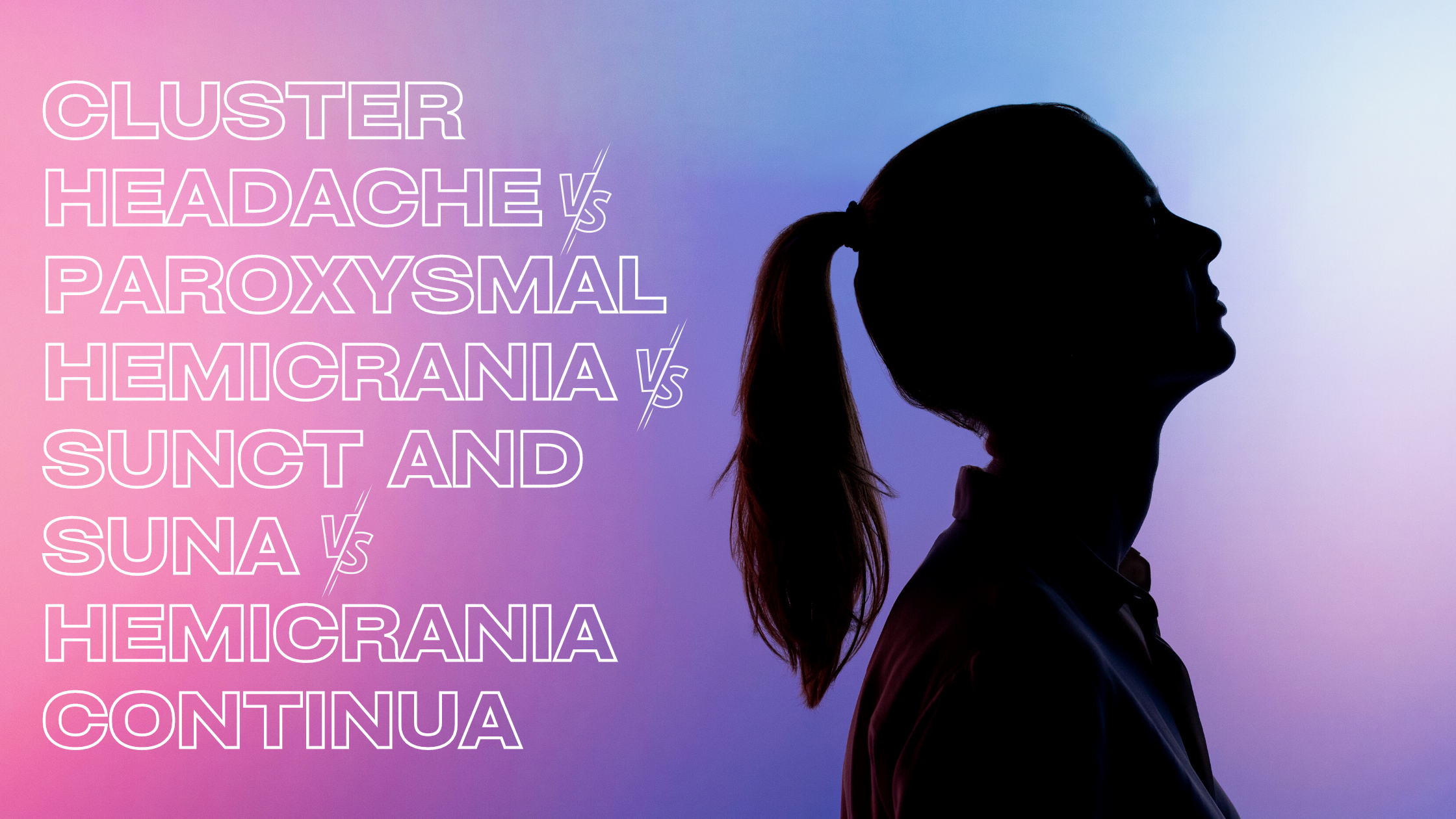Comparison of Trigeminal Autonomic Cephalalgias: Cluster Headache vs Paroxysmal Hemicrania vs SUNCT and SUNA vs Hemicrania Continua
Posted on August 04 2023,

| Clinical Features | Cluster Headache | Paroxysmal Hemicrania | SUNCT* & SUNA** | Hemicrania Continua |
|---|---|---|---|---|
| Sex Predominance | Mostly male | Equal male & female | Mostly female | Mostly female |
| Pain Type | Stabbing | Stabbing or pulsating | Stabbing or burning | Varied pain types |
| Pain Severity | Very severe | Very severe | Severe to very severe | Mild to severe |
| Location | Eye or temple | Eye or temple | Eye or temple | Eye, forehead, and/or temple |
| Attack Frequency | 1 every other day to 8 daily | 5 to 40 daily | 1 to 200 daily | Constant with flare ups |
| Attack Duration | 15 mins to 3 hrs | 2 to 30 mins | Seconds to 10 mins | Months to years untreated |
| Autonomic Symptoms? | Yes | Yes | Yes | Yes |
| Agitation? | Yes | Yes | Sometimes | Yes |
| Migraine Features?*** | Yes | Yes | Rarely | Often |
| Triggers | Alcohol | Stress, exercise, alcohol | Touching face | Alcohol |
| Indomethacin Responsive? | No | Yes | No | Yes |
| Acute Treatment | Triptans, oxygen | None | Lidocaine IV for severe | None |
| Preventive Treatment | Verapamil, corticosteroids, galcanezumab, lithium | Indomethacin, verapamil, NSAIDs | Lamotigrine, oxcarbazepine, topiramate, gabapentin | Indomethacin |
SUNCT: Short-lasting unilateral neuralgiform headache attacks with conjunctival injection and tearing
SUNA: Short-lasting unilateral neuralgiform headache attacks with cranial autonomic symptoms (Autonomic symptoms: conjunctival injection, tearing, nasal congestion/runny nose, facial sweating, small pupil and/or droopy eyelid, eyelid swelling on affected side).
NSAIDs: nonsteroidal anti-inflammatory drugs.
*Conjuctival injection AND lacrimation (tearing) are present.
**Either conjuctival injection OR lacrimation is present, not both.
***Migraine features may include nausea, vomiting, light/noise sensitivity.
Tue, Mar 11, 25
Biofeedback Types for Migraine Treatment
Biofeedback is a non-invasive, non-pharmacological approach that enables individuals to gain control over physiological processes linked to migraine, such as muscle tension, blood flow, and brain activity. Using monitoring equipment,...
Read MoreMon, Mar 10, 25
Chronic Pain Conditions Associated with Migraine
Chronic Pain Conditions Associated with Migraine Condition Description Association with Migraine References Irritable Bowel Syndrome (IBS) A functional gastrointestinal disorder characterized by abdominal pain and altered bowel habits. Higher prevalence...
Read More


